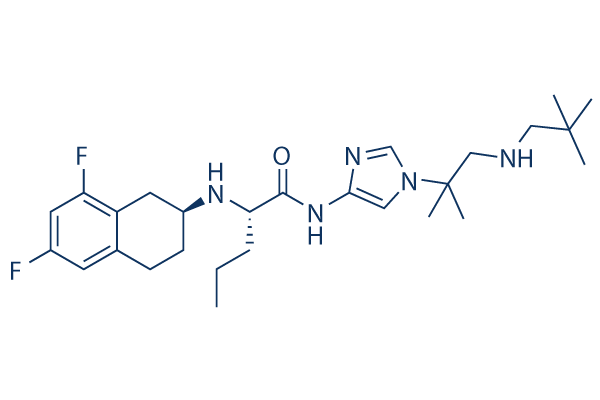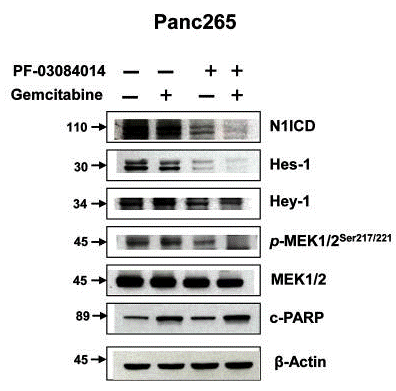
- Inhibitors
- By product type
- Natural Products
- Inducing Agents
- Peptides
- Antibiotics
- Antibody-drug Conjugates(ADC)
- PROTAC
- Hydrotropic Agents
- Dyes
- By Signaling Pathways
- PI3K/Akt/mTOR
- Epigenetics
- Methylation
- Immunology & Inflammation
- Protein Tyrosine Kinase
- Angiogenesis
- Apoptosis
- Autophagy
By research - Antibodies
- Compound Libraries
- Popular Compound Libraries
- Customize Library
- Clinical and FDA-approved Related
- Bioactive Compound Libraries
- Inhibitor Related
- Natural Product Related
- Metabolism Related
- Cell Death Related
- By Signaling Pathway
- By Disease
- Anti-infection and Antiviral Related
- Neuronal and Immunology Related
- Fragment and Covalent Related
- FDA-approved Drug Library
- FDA-approved & Passed Phase I Drug Library
- Preclinical/Clinical Compound Library
- Bioactive Compound Library-I
- Bioactive Compound Library-Ⅱ
- Kinase Inhibitor Library
- Express-Pick Library
- Natural Product Library
- Human Endogenous Metabolite Compound Library
- Alkaloid Compound LibraryNew
- Angiogenesis Related compound Library
- Anti-Aging Compound Library
- Anti-alzheimer Disease Compound Library
- Antibiotics compound Library
- Anti-cancer Compound Library
- Anti-cancer Compound Library-Ⅱ
- Anti-cancer Metabolism Compound Library
- Anti-Cardiovascular Disease Compound Library
- Anti-diabetic Compound Library
- Anti-infection Compound Library
- Antioxidant Compound Library
- Anti-parasitic Compound Library
- Antiviral Compound Library
- Apoptosis Compound Library
- Autophagy Compound Library
- Calcium Channel Blocker LibraryNew
- Cambridge Cancer Compound Library
- Carbohydrate Metabolism Compound LibraryNew
- Cell Cycle compound library
- CNS-Penetrant Compound Library
- Covalent Inhibitor Library
- Cytokine Inhibitor LibraryNew
- Cytoskeletal Signaling Pathway Compound Library
- DNA Damage/DNA Repair compound Library
- Drug-like Compound Library
- Endoplasmic Reticulum Stress Compound Library
- Epigenetics Compound Library
- Exosome Secretion Related Compound LibraryNew
- FDA-approved Anticancer Drug LibraryNew
- Ferroptosis Compound Library
- Flavonoid Compound Library
- Fragment Library
- Glutamine Metabolism Compound Library
- Glycolysis Compound Library
- GPCR Compound Library
- Gut Microbial Metabolite Library
- HIF-1 Signaling Pathway Compound Library
- Highly Selective Inhibitor Library
- Histone modification compound library
- HTS Library for Drug Discovery
- Human Hormone Related Compound LibraryNew
- Human Transcription Factor Compound LibraryNew
- Immunology/Inflammation Compound Library
- Inhibitor Library
- Ion Channel Ligand Library
- JAK/STAT compound library
- Lipid Metabolism Compound LibraryNew
- Macrocyclic Compound Library
- MAPK Inhibitor Library
- Medicine Food Homology Compound Library
- Metabolism Compound Library
- Methylation Compound Library
- Mouse Metabolite Compound LibraryNew
- Natural Organic Compound Library
- Neuronal Signaling Compound Library
- NF-κB Signaling Compound Library
- Nucleoside Analogue Library
- Obesity Compound Library
- Oxidative Stress Compound LibraryNew
- Plant Extract Library
- Phenotypic Screening Library
- PI3K/Akt Inhibitor Library
- Protease Inhibitor Library
- Protein-protein Interaction Inhibitor Library
- Pyroptosis Compound Library
- Small Molecule Immuno-Oncology Compound Library
- Mitochondria-Targeted Compound LibraryNew
- Stem Cell Differentiation Compound LibraryNew
- Stem Cell Signaling Compound Library
- Natural Phenol Compound LibraryNew
- Natural Terpenoid Compound LibraryNew
- TGF-beta/Smad compound library
- Traditional Chinese Medicine Library
- Tyrosine Kinase Inhibitor Library
- Ubiquitination Compound Library
-
Cherry Picking
You can personalize your library with chemicals from within Selleck's inventory. Build the right library for your research endeavors by choosing from compounds in all of our available libraries.
Please contact us at info@selleckchem.com to customize your library.
You could select:
- Bioreagents
- qPCR
- 2x SYBR Green qPCR Master Mix
- 2x SYBR Green qPCR Master Mix(Low ROX)
- 2x SYBR Green qPCR Master Mix(High ROX)
- Protein Assay
- Protein A/G Magnetic Beads for IP
- Anti-Flag magnetic beads
- Anti-Flag Affinity Gel
- Anti-Myc magnetic beads
- Anti-HA magnetic beads
- Poly DYKDDDDK Tag Peptide lyophilized powder
- Protease Inhibitor Cocktail
- Protease Inhibitor Cocktail (EDTA-Free, 100X in DMSO)
- Phosphatase Inhibitor Cocktail (2 Tubes, 100X)
- Cell Biology
- Cell Counting Kit-8 (CCK-8)
- Animal Experiment
- Mouse Direct PCR Kit (For Genotyping)
- Featured Products
- MRTX1133
- Nab-Paclitaxel
- KP-457
- IAG933
- RMC-6236 (Daraxonrasib)
- RMC-7977
- Zoldonrasib (RMC-9805)
- GsMTx4
- Navitoclax (ABT-263)
- TSA (Trichostatin A)
- Y-27632 Dihydrochloride
- SB431542
- SB202190
- MK-2206 Dihydrochloride
- LY294002
- Alisertib (MLN8237)
- XAV-939
- CHIR-99021 (Laduviglusib)
- Bafilomycin A1 (Baf-A1)
- Thiazovivin (TZV)
- CP-673451
- Verteporfin
- DAPT
- Galunisertib (LY2157299)
- MG132
- SBE-β-CD
- Tween 80
- Bavdegalutamide (ARV-110)
- Z-VAD-FMK
- Wnt-C59 (C59)
- IWR-1-endo
- (+)-JQ1
- 3-Deazaneplanocin A (DZNep) Hydrochloride
- RepSox (E-616452)
- Erastin
- Q-VD-Oph
- Puromycin Dihydrochloride
- Cycloheximide
- Telaglenastat (CB-839)
- A-83-01
- Ceralasertib (AZD6738)
- Liproxstatin-1
- Emricasan (IDN-6556)
- PMA (Phorbol 12-myristate 13-acetate)
- Dibutyryl cAMP (Bucladesine) sodium
- Nedisertib (M3814)
- PLX5622
- IKE (Imidazole Ketone Erastin)
- STM2457
- Saruparib (AZD5305)
- New Products
- Contact Us
research use only
Nirogacestat (PF-03084014) γ-Secretase inhibitor
Cat.No.S8018

Chemical Structure
Molecular Weight: 489.64
Quality Control
Batch:
Purity:
99.31%
99.31
Chemical Information, Storage & Stability
| Molecular Weight | 489.64 | Formula | C27H41F2N5O |
Storage (From the date of receipt) | |
|---|---|---|---|---|---|
| CAS No. | 1290543-63-3 | Download SDF | Storage of Stock Solutions |
|
|
| Synonyms | PF-3084014 | Smiles | CCCC(C(=O)NC1=CN(C=N1)C(C)(C)CNCC(C)(C)C)NC2CCC3=C(C2)C(=CC(=C3)F)F | ||
Solubility
|
In vitro |
DMSO
: 98 mg/mL
(200.14 mM)
Ethanol : 49 mg/mL Water : Insoluble |
Molarity Calculator
|
In vivo |
|||||
In vivo Formulation Calculator (Clear solution)
Step 1: Enter information below (Recommended: An additional animal making an allowance for loss during the experiment)
mg/kg
g
μL
Step 2: Enter the in vivo formulation (This is only the calculator, not formulation. Please contact us first if there is no in vivo formulation at the solubility Section.)
% DMSO
%
% Tween 80
% ddH2O
%DMSO
%
Calculation results:
Working concentration: mg/ml;
Method for preparing DMSO master liquid: mg drug pre-dissolved in μL DMSO ( Master liquid concentration mg/mL, Please contact us first if the concentration exceeds the DMSO solubility of the batch of drug. )
Method for preparing in vivo formulation: Take μL DMSO master liquid, next addμL PEG300, mix and clarify, next addμL Tween 80, mix and clarify, next add μL ddH2O, mix and clarify.
Method for preparing in vivo formulation: Take μL DMSO master liquid, next add μL Corn oil, mix and clarify.
Note: 1. Please make sure the liquid is clear before adding the next solvent.
2. Be sure to add the solvent(s) in order. You must ensure that the solution obtained, in the previous addition, is a clear solution before proceeding to add the next solvent. Physical methods such
as vortex, ultrasound or hot water bath can be used to aid dissolving.
Mechanism of Action
| Targets/IC50/Ki |
gamma-secretase [1]
(cell-free assay) 6.2 nM
|
|---|---|
| In vitro |
Nirogacestat (PF-03084014) inhibits Notch receptor cleavage in cellular assays using HPB-ALL cells that harbor mutations in both the heterodimerization and PEST domains in Notch1 with IC50 of 13.3 nM. It downregulates Notch target genes Hes-1 and cMyc expression in HPB-ALL cells with IC50 of <1 nM and 10 nM, respectively, and inhibits cell growth of a subset of human T-ALL cell lines (HPB-ALL, DND-41, TALL-1, and Sup-T1) through induction of cell cycle arrest and apoptosis with IC50s of 30–100 nM. [1] This compound reduces proliferation of HUVECs with IC50 of 0.5 μM, and decreases the lumen formation with an IC50 value of 50 nM. It (1 μM) has no antiproliferative effect in MX1 cells; however, it inhibits migration by 95%. [2]
|
| Kinase Assay |
γ-secretase assay
|
|
A DNA fragment encoding amino acids 596 - 695 of the 695-aa isoform of APP (APP695) and the Flag sequence (DYKDDDDK) at the C terminus is generated by PCR amplification with suitably designed oligonucleotides and the APP695 cDNA. The Met that serves as the translation start site is residue 596 of APP695 (the P1 residue with respect to theβ-secretase cleavage site). This DNA fragment is inserted into the prokaryotic expression vector pET2-21b. The recombinant protein, C100Flag, is overproduced in Escherichia coli [strain BL21(DE3)] and purified by Mono-Q column chromatography. C100Flag (1.7 μM) is incubated with cell membranes (0.5 mg/mL) in the presence of CHAPSO, CHAPS (3-[(3-cholamidopropyl)dim-ethylammonio]-1-propanesulfonate), or Triton X-100 (0, 0.125, 0.25, 0.5, or 1%) in buffer B (50 mM Pipes, pH 7.0y 5mM MgCl2/5 mM CaCl2/150 mM KCl) at 37°C. The reactions are stopped by adding RIPA (150 mM NaCl/1.0% NP-40/0.5% sodium deoxycholatey 0.1% SDS/50 mM Tris HCl, pH 8.0) and boiling for 5 min. The samples ae centrifuged and the supernatant solutions are assayed for the Aβ peptides by ECL. The Aβ40- and Aβ42-related products from γ-secretase-mediated processing of C100Flag possess a Met at the N terminus and are thus defined as M-Aβ40 and M-Aβ42, respectively. Likewise, supernatant solution (0.125 mg/mL) from CHAPSO-extracted HeLa cell membranes (solubilized γ-secretase) is incubated with C100Flag (1.7 μM) in buffer B containing 0.25% CHAPSO and subsequently assayed for M-Aβ40 and M-Aβ42 by using ECL. This compound, Nirogacestat (PF-03084014), is used in the experimental context.
|
|
| In vivo |
Nirogacestat (PF-03084014) orally administrated in a single dose of 200 mg/kg causes maximal NICD inhibition for ∼80% in xenograft HPB-ALL tumors. It shows robust antitumor activity in this mode with a maximal tumor growth inhibition of ∼92% at a dose of 150 mg/kg, accompanied by a significant reduction of NICD/Notch1, tumor mitotic index (Ki67), and apoptosis (activated caspase-3) staining. [1] At 120 mg/kg, this compound induces apoptosis, antiproliferation, reduces tumor cell self-renewal ability, impairs tumor vasculature, and decreases metastasis activity in breast cancer HCC1599 tumor-bearing mice. Its treatment displays significant antitumor activity in various types of the breast xenograft models with TGI value of at least 50%. [2]
|
References |
Applications
| Methods | Biomarkers | Images | PMID |
|---|---|---|---|
| Western blot | N1ICD / Hes-1 / Hey-1 / p-MEK / MEK / c-PARP |

|
23402814 |
Clinical Trial Information
(data from https://clinicaltrials.gov, updated on 2024-05-22)
| NCT Number | Recruitment | Conditions | Sponsor/Collaborators | Start Date | Phases |
|---|---|---|---|---|---|
| NCT02338531 | Withdrawn | Breast Cancer |
Jules Bordet Institute |
June 2015 | Phase 2 |
| NCT02299635 | Terminated | Triple Negative Breast Neoplasms |
Pfizer |
February 3 2015 | Phase 2 |
| NCT02109445 | Terminated | Metastatic Cancer Pancreas |
Pfizer|Academic GI Cancer Consortium (AGICC) |
September 3 2014 | Phase 2 |
| NCT01876251 | Terminated | Breast Cancer Metastatic |
Pfizer |
November 4 2013 | Phase 1 |
Tech Support
Tel: +1-832-582-8158 Ext:3
If you have any other enquiries, please leave a message.






































